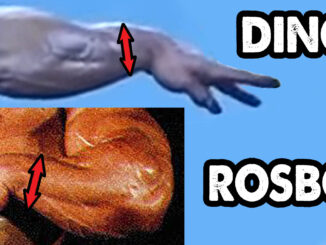Title: The Bizarre Tale of Acoustic Kitty: When the CIA Turned Cats into Spies
Introduction
The world of espionage is filled with intriguing and often bizarre tales, and one such story is that of Acoustic Kitty. In the 1960s, the Central Intelligence Agency (CIA) embarked on a secret project aimed at turning ordinary felines into covert spies, with the goal of eavesdropping on the Kremlin and Soviet embassies. This audacious experiment, shrouded in secrecy for decades, involved surgical procedures to implant listening devices into the bodies of unsuspecting cats. The story of Acoustic Kitty is both a testament to the ingenuity of intelligence agencies and a curious episode that raises questions about the ethics and practicality of such endeavors.
The Birth of Acoustic Kitty
In the midst of the Cold War, when tensions between the United States and the Soviet Union were at their peak, the CIA sought innovative ways to gather intelligence. The concept of Acoustic Kitty emerged from the Directorate of Science & Technology, the division responsible for developing cutting-edge surveillance techniques. The project aimed to leverage the unassuming nature of domestic cats, which could potentially wander freely around sensitive areas without raising suspicion.
The Technical Marvel
The Acoustic Kitty project involved a series of intricate surgical procedures performed by a veterinary surgeon. The goal was to implant a microphone inside the cat’s ear canal, a miniature radio transmitter at the base of its skull, and a fine wire into its fur. This arrangement allowed the cat to covertly record and transmit sounds from its immediate surroundings to a remote location, essentially turning it into a mobile listening device.
Overcoming the Distractions
As the project advanced, it became apparent that one of the primary challenges was the cat’s propensity for distraction. Felines are known for their independence, and the cat’s natural behaviors could undermine its effectiveness as a spy. The CIA needed to find a solution to ensure the cat would remain focused on its mission.
To address this issue, a second operation was conducted to curb the cat’s sense of hunger. The goal was to ensure that the cat remained undistracted while performing its espionage duties.
Costly Ventures
The development of Acoustic Kitty was a costly endeavor. Former CIA officer Victor Marchetti later revealed that the project had a price tag of approximately $20 million. This substantial investment reflected the agency’s commitment to exploring groundbreaking methods for gathering intelligence during a turbulent period of international relations.
The Ill-Fated First Mission
The first mission of Acoustic Kitty was to eavesdrop on two men who were conducting conversations in a park outside the Soviet compound on Wisconsin Avenue in Washington, D.C. The cat was released nearby with the hopes of surreptitiously gathering crucial information. However, the mission took a tragic turn when the cat was struck by a taxi almost immediately after being released. The incident, initially believed to be fatal, marked a disastrous beginning for the ambitious project.
Conflicting Accounts
The fate of Acoustic Kitty became a subject of intrigue and debate. The widely accepted narrative was that the cat’s first mission ended in failure, with its untimely demise. However, in 2013, Robert Wallace, a former Director of the CIA’s Office of Technical Service, challenged this narrative. Wallace claimed that the project was discontinued not because of the cat’s accident but rather due to the insurmountable challenge of training the feline to behave as required. According to Wallace, “the equipment was taken out of the cat; the cat was re-sewn for a second time and lived a long and happy life afterward.”
Regardless of the true outcome, it was clear that the project faced insurmountable challenges and subsequent tests did not yield better results.
The End of Acoustic Kitty
Following the ill-fated first mission and the subsequent difficulties in training the cats for espionage, the Acoustic Kitty project was deemed a failure. In 1967, a closing memorandum was issued, stating that while researchers believed that cats could be trained to move short distances as required, “the environmental and security factors in using this technique in a real foreign situation force us to conclude that for our (intelligence) purposes, it would not be practical.”
Declassification and Public Disclosure
The story of Acoustic Kitty remained a classified secret for several decades. It was not until 2001 that some CIA documents were declassified, shedding light on the strange project that involved turning cats into spies.
Conclusion
The tale of Acoustic Kitty stands as a testament to the innovative and at times audacious methods employed by intelligence agencies during the Cold War. While it might have seemed like a peculiar and even comical endeavor, it also raises ethical and practical questions about the use of animals in espionage. Regardless of the project’s ultimate outcome, it remains a unique and bizarre chapter in the history of espionage, showcasing the lengths to which intelligence agencies were willing to go in their pursuit of information during a turbulent period in global history.
Jurassic Gorilla, Gorilla Harry T-Shirt https://jurassicgorilla.com





Be the first to comment